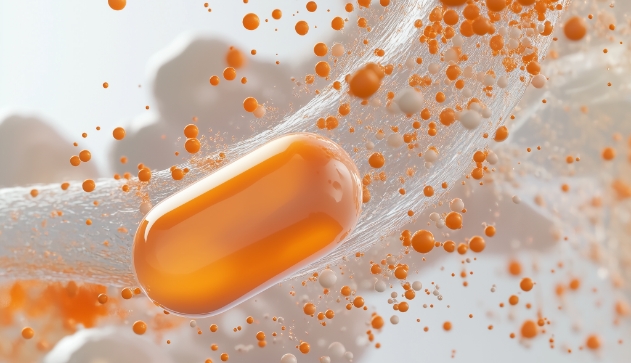Emerging oral therapeutic strategies for inhibiting PCSK9.
December 4th, 2024
AQUR
Beyond the Needle: The rise of oral PCSK9 inhibitors in cholesterol management
For decades, managing high cholesterol has largely revolved around one word: statins. These oral drugs revolutionized cardiovascular health, saving millions of lives.
But as science marches forward, a new class of cholesterol-lowering therapies is gaining attention—PCSK9 inhibitors. And while the first wave came as injectables, a promising second wave is now forming in pill form.
In this article, we’ll explore the science behind PCSK9, the limitations of current treatments, and the exciting pipeline of oral PCSK9 inhibitors poised to transform how we approach high cholesterol.
What is PCSK9 and Why Does It Matter?
PCSK9 (Proprotein Convertase Subtilisin/Kexin Type 9) is a protein that plays a crucial role in regulating LDL (“bad”) cholesterol levels. It does so by binding to LDL receptors on liver cells and targeting them for destruction. Fewer receptors mean less cholesterol is cleared from the blood, leading to elevated LDL-C levels—a major risk factor for cardiovascular disease. Blocking PCSK9’s action increases LDL receptors and enhances cholesterol clearance.

The Status Quo: injections that work, but at a price
Three injectable PCSK9 therapies—evolocumab, alirocumab (monoclonal antibodies), and inclisiran (siRNA-based)—have demonstrated LDL-C reductions of 50–60%. However, their subcutaneous delivery and high cost have limited their widespread use. That’s where oral PCSK9 inhibitors come in. Designed to be taken daily like statins, these drugs could democratize access to next-gen lipid-lowering therapy.
Here are the most advanced oral PCSK9 inhibitors currently under investigation:
1. DC371739
Mechanism: Inhibits PCSK9 and ANGPTL3 transcription by blocking the HNF-1α transcription factor.
Efficacy: ~19% LDL-C reduction in Phase I.
Bonus: Also reduces triglycerides and shows potential for dual targeting.
Status: Phase Ib/IIa clinical trials.
Notable: Derived from natural compounds like berberine but with better bioavailability and safety.
2. CVI-LM001
Mechanism: Suppresses PCSK9 transcription and stabilizes LDL receptor mRNA; activates AMPK to reduce triglyceride synthesis.
Efficacy: 26.3% LDL-C reduction after 28 days.
Status: Phase II clinical trials.
Notable: Derived from Corydalis, this molecule mimics the effect of berberine but with stronger potency and tolerability.
3. AZD0780
Mechanism: Binds directly to PCSK9, blocking its function.
Efficacy: Up to 52% LDL-C reduction when combined with statins.
Status: In Phase II.
Notable: First of its kind oral PCSK9 binder—potentially a game-changer for statin-resistant patients.
4. Enlicitide Decanoate (MK-0616)
Mechanism: A macrocyclic peptide that inhibits PCSK9-LDL receptor binding.
Efficacy: Up to 60.9% LDL-C reduction in Phase IIb.
Bonus: Reduces Lp(a) levels by ~20%, a key contributor to atherosclerosis.
Status: In Phase III (CORALreef trial).
Notable: Best-in-class oral PCSK9 candidate with mAb-level potency.
5. NNC0385-0434 (Discontinued)
Mechanism: Mimics the LDL receptor’s EGF-A domain, preventing PCSK9 from binding.
Efficacy: 61.8% LDL-C reduction at highest dose, comparable to evolocumab.
Status: Development halted due to portfolio reprioritization despite strong results.
Notable: Used SNAC technology to enable oral absorption.
Why Oral PCSK9 Inhibitors Matter
Convenience: Daily pills are more acceptable and accessible than injections.
Adherence: Easier regimens increase patient compliance.
Affordability: Potential for lower manufacturing and distribution costs.
Combination Potential: Can be stacked with statins, ezetimibe, or bempedoic acid.
Despite the promise, oral PCSK9 inhibitors face several hurdles:
Bioavailability: Many molecules require permeation enhancers like sodium caprate to survive digestion and cross intestinal walls.
Long half-life drugs like MK-0616 may face food interaction issues, reducing effectiveness if not timed properly.
Efficacy standards are high—LDL-C reductions need to exceed 50% for high-risk patients.
The Bigger Picture: A New Era of Cardiovascular Prevention
It’s been nearly 40 years since statins hit the market. Oral PCSK9 inhibitors could mark the next revolution in lipid management—especially for:
Statin-intolerant patients
Individuals with familial hypercholesterolemia
Those needing more aggressive LDL-C reduction
And with MK-0616 in Phase III, we may be on the cusp of seeing the first FDA-approved oral PCSK9 drug within the next couple of years.
The science is solid. The pipeline is promising. And the need is urgent. Oral PCSK9 inhibitors aren’t just a convenience—they’re a potential lifeline for millions who need more than statins, but less than a needle. As Phase III trials continue and regulatory reviews advance, we could be witnessing the beginning of a new chapter in cardiovascular medicine.
The future of cholesterol therapy might just be a pill away.
Share this article: